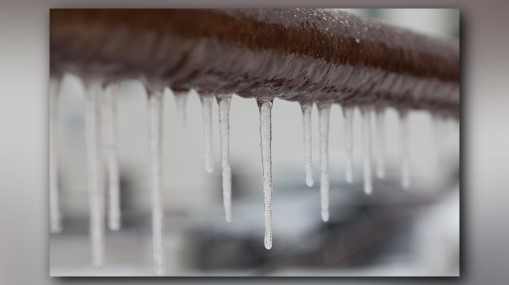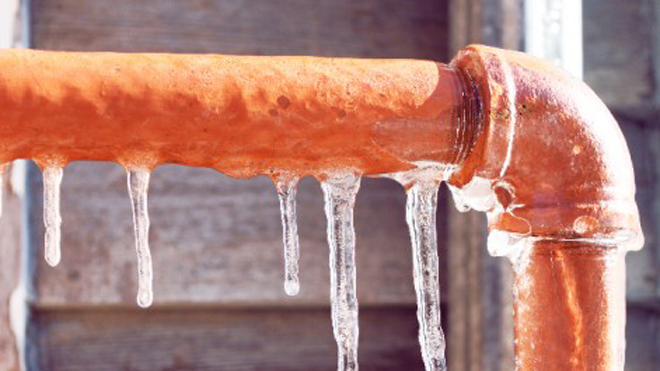The author is making a number of great annotation regarding How To Avoid Freezing Pipes as a whole in this great article which follows.

Winter can ruin your plumbing, especially by freezing pipes. Here's how to avoid it from happening and what to do if it does.
Introduction
As temperatures decrease, the threat of frozen pipelines rises, potentially resulting in pricey fixings and water damage. Understanding how to stop frozen pipelines is vital for home owners in cold environments.
Recognizing Icy Pipes
What causes pipes to ice up?
Pipes ice up when subjected to temperatures listed below 32 ° F (0 ° C) for extended durations. As water inside the pipelines ices up, it broadens, taxing the pipeline walls and possibly creating them to break.
Risks and damages
Frozen pipelines can result in supply of water disturbances, home damages, and pricey repair services. Ruptured pipelines can flood homes and create considerable structural damage.
Indications of Frozen Water Lines
Recognizing icy pipes early can prevent them from rupturing.
Just how to recognize icy pipes
Seek reduced water flow from taps, unusual smells or sounds from pipelines, and noticeable frost on subjected pipelines.
Avoidance Tips
Shielding susceptible pipelines
Wrap pipelines in insulation sleeves or make use of heat tape to safeguard them from freezing temperatures. Focus on pipes in unheated or outside locations of the home.
Heating strategies
Keep interior spaces adequately warmed, especially areas with pipes. Open up cupboard doors to permit cozy air to distribute around pipelines under sinks.
Securing Outside Plumbing
Garden pipes and outdoor taps
Separate and drain pipes garden tubes prior to winter. Set up frost-proof faucets or cover exterior taps with protected caps.
What to Do If Your Pipes Freeze
Immediate actions to take
If you think icy pipes, maintain taps available to eliminate stress as the ice melts. Utilize a hairdryer or towels soaked in warm water to thaw pipes gradually.
Long-Term Solutions
Structural changes
Think about rerouting pipes away from outside wall surfaces or unheated areas. Add extra insulation to attics, basements, and crawl spaces.
Upgrading insulation
Purchase high-quality insulation for pipes, attics, and wall surfaces. Proper insulation helps preserve consistent temperatures and lowers the danger of frozen pipelines.
Verdict
Avoiding frozen pipes needs aggressive actions and quick actions. By comprehending the causes, indicators, and preventive measures, property owners can shield their plumbing during winter.
5 Ways to Prevent Frozen Pipes
Drain Outdoor Faucets and Disconnect Hoses
First, close the shut-off valve that controls the flow of water in the pipe to your outdoor faucet. Then, head outside to disconnect and drain your hose and open the outdoor faucet to allow the water to completely drain out of the line. Turn off the faucet when done. Finally, head back to the shut-off valve and drain the remaining water inside the pipe into a bucket or container. Additionally, if you have a home irrigation system, you should consider hiring an expert to clear the system of water each year.
Insulate Pipes
One of the best and most cost-effective methods for preventing frozen water pipes is to wrap your pipes with insulation. This is especially important for areas in your home that aren’t exposed to heat, such as an attic. We suggest using foam sleeves, which can typically be found at your local hardware store.
Keep Heat Running at 65
Your pipes are located inside your walls, and the temperature there is much colder than the rest of the house. To prevent your pipes from freezing, The Insurance Information Institute suggests that you keep your home heated to at least 65 degrees, even when traveling. You may want to invest in smart devices that can keep an eye on the temperature in your home while you’re away.
Leave Water Dripping
Moving water — even a small trickle — can prevent ice from forming inside your pipes. When freezing temps are imminent, start a drip of water from all faucets that serve exposed pipes. Leaving a few faucets running will also help relieve pressure inside the pipes and help prevent a rupture if the water inside freezes.
Open Cupboard Doors
Warm your kitchen and bathroom pipes by opening cupboards and vanities. You should also leave your interior doors ajar to help warm air circulate evenly throughout your home.

I found that page about Winter Plumbing Precautions: Preventing Frozen Pipes when browsing the internet. Are you aware of somebody else who is truly interested in the niche? Do not hesitate to share it. I value your readership.
This Website